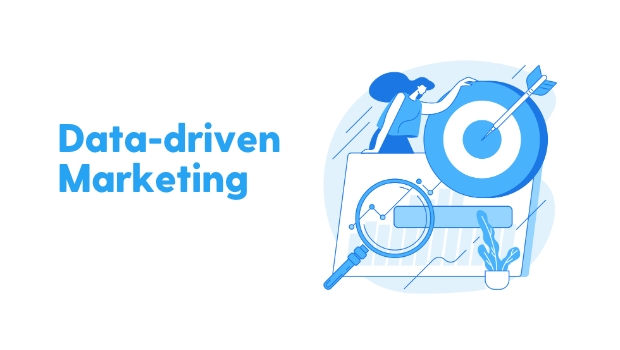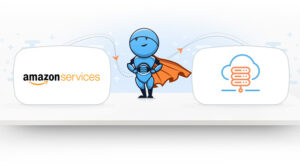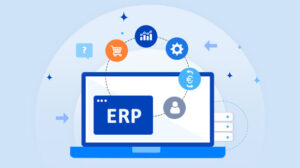What is Data-Driven Marketing
Data-driven marketing is a methodology for making marketing decisions that are based on data and data analysis. It involves using data to understand customer behavior and preferences, as well as the performance of marketing campaigns, in order to make more informed decisions about how to reach and engage customers.
One of the main benefits of data-driven marketing is the ability to increase return on investment (ROI). By using data to understand what is working and what is not, marketers can optimize their campaigns to focus on the most effective strategies and tactics, which can lead to better results and a higher ROI.
Another benefit of data-driven marketing is improved targeting. By using data to understand customer demographics, interests, and behavior, marketers can create more targeted campaigns that are more likely to resonate with specific groups of customers. This can lead to higher conversion rates and more effective customer engagement.
Data-driven marketing also enables marketers to measure and optimize their campaigns in real-time, allowing them to make adjustments as needed. Marketers can track the performance of their campaigns and use this information to optimize the messaging, targeting, and other elements of their campaigns. This enables them to get better results from their marketing efforts over time.
Lastly, Data-driven marketing also provides more accurate and efficient customer profiling, leading to more personalized messaging, which can lead to a better customer experience and increased brand loyalty.
To sum up Data-driven marketing is a method of using data to inform marketing decisions, including targeting, messaging, and optimization. By utilizing data-driven approach, businesses can achieve better ROI, improved targeting, and more efficient campaigns.
Also, read:
Setting-Up Clear and Measurable Goals for Data-Driven Marketing Efforts
Setting clear and measurable goals is an important step in any data-driven marketing effort. Without goals, it can be difficult to know what you’re trying to achieve or how to measure the success of your campaigns. By setting clear and measurable goals, you can ensure that your marketing efforts are aligned with your overall business objectives, and that you have a way to evaluate the performance of your campaigns.
When setting goals for data-driven marketing efforts, it’s important to consider both short-term and long-term objectives. Short-term goals might include increasing website traffic, improving conversion rates, or boosting engagement on social media. Long-term goals might include building brand awareness, increasing customer loyalty, or driving sales. It’s important to align the goals with business objectives and set the measurable KPI’s.
Which Metrics to Measure for Data-Driven Marketing
To determine which metrics to track and measure, it’s important to consider the specific goals you’ve set for your data-driven marketing efforts. For example, if your goal is to increase website traffic, you might track metrics such as unique visitors, page views, and bounce rate. If your goal is conversion rate optimization, you might track metrics such as click-through rate, conversion rate, and revenue per visitor.
It’s also important to consider the context of your campaign, what type of campaigns you are running, and what type of metrics will make sense to track for those campaigns. For example, measuring brand awareness metrics like brand recall, brand association, and brand favorability are appropriate for branding campaigns. But it’s not that useful in performance campaigns which aims to drive sales or lead generation.
Here’s a table of some common data-driven marketing goals, along with a list of key performance indicators (KPIs) that can be used to measure the success of those goals:
| Goal | Measurable KPI(s) |
| Increase website traffic | Unique visitors, page views, bounce rate, sessions, time on site |
| Improve conversion rates | Click-through rate (CTR), conversion rate, revenue per visitor, cost per conversion |
| Boost social media engagement | Followers, likes, shares, comments, engagement rate |
| Build brand awareness | Brand recall, brand association, brand favorability, ad recall, brand awareness survey |
| Increase customer loyalty | Customer retention rate, customer lifetime value (LTV), net promoter score (NPS) |
| Drive sales | Revenue, transactions, average order value (AOV), cost per acquisition (CPA) |
| Lead Generation | Number of leads, lead-to-customer conversion rate, cost per lead (CPL) |
It’s also important to note that not all goals are quantifiable and measurable by numbers. Like increasing brand awareness, which can be measured through surveys or brand recall tests. While this may be less concrete than a metric like website traffic, it’s still important to track these more qualitative goals as they are important for your business as well.
Remember, the most important thing is to track the metrics that are most relevant to the goals you’ve set for your data-driven marketing efforts, and to use this information to make data-driven decisions that help you achieve those goals.
Also, read:
Data Collection and Analysis for Data-Driven Marketing
Data collection and analysis are critical components of data-driven marketing. Let’s break down this problem statement into three parts and look at each of them in some detail:
- Different types of data that can inform marketing decisions, such as customer demographics, website analytics, and campaign performance metrics
- Tools and resources for collecting and analyzing data
- Best practices for ensuring data accuracy and completeness
Different Types of Data that Can Inform Marketing Decisions
There are four types of data that can inform marketing decisions, including:
- Customer demographics: This type of data includes information about a customer’s age, gender, income, education level, and other characteristics. This data can be used to understand customer segments and create more targeted marketing campaigns. Read more – Customer Analytics
- Website analytics: This type of data includes information about website traffic, including how many people visit the site, how long they stay, which pages they visit, and how they found the site. This data can be used to understand how customers interact with a company’s website and make improvements to the site.
- Campaign performance metrics: This type of data includes information about the performance of marketing campaigns, such as the click-through rate, conversion rate, and revenue generated. This data can be used to understand the effectiveness of different marketing strategies and tactics, and make adjustments as needed.
- Social Media Data: Data from social media platforms such as Facebook, Instagram, Twitter, etc, This can include information about customer engagement, brand mentions, and social media posts.
Tools and Resources for Collecting and Analyzing Data
Few popular tools and resources available for collecting and analyzing data include:
- Google Analytics: a free web analytics service offered by Google that tracks and reports website traffic.
- Omniture Adobe Analytics: A paid web analytics service that provides a range of analytics capabilities, including website and marketing campaign analysis.
- Mixpanel: A paid service that provides web and mobile analytics to track the user behavior in a more advanced way.
- Tableau, Power BI, Looker, etc are few of the popular BI tools that can be used to analyze the data.
Best Practices for Ensuring Data Accuracy and Completeness
To ensure data accuracy and completeness, it’s important to follow best practices such as:
- Validate data regularly: check the data for errors and inconsistencies, and fix any errors that are found.
Keep data up-to-date: Make sure you are collecting and analyzing the most recent data available, so that your marketing decisions are based on the most current information. - Use multiple sources of data: Collect data from a variety of sources to get a more complete and accurate picture of your customers and their behavior.
- Use proper data collection methodologies: Be sure to use appropriate methodologies for data collection, such as surveys, focus groups, or observational research, to ensure that the data you collect is accurate and reliable.
- Secure the data: Make sure to protect the data you collect and store by using appropriate data security measures such as encryption and access controls.
Also, read:
Data-Informed Decision Making
There are three aspects to be considered in data-informed decision making for marketing:
- How to use data to inform and optimize various aspects of the marketing mix, such as product development, pricing, promotion, and distribution
- Techniques for segmenting and targeting customers based on data
- Best practices for testing and experimentation
Let’s look at them individually.
How to use data to inform and optimize various aspects of the marketing mix
Data can be used to inform and optimize various aspects of the marketing mix, including product development, pricing, promotion, and distribution. Here’s a brief overview of how data can be used to optimize each of these areas:
- Product Development: By analyzing customer data, businesses can gain a better understanding of what products or services customers want and need. This can help inform product development decisions by highlighting which features customers value most and identifying areas where there is an unmet need. This can help in developing a product that truly serves the customer’s needs and wants.
- Pricing: Data can be used to inform pricing strategies by providing insight into how customers perceive value and how they respond to different price points. For example, by analyzing sales data, businesses can identify the most profitable price points and make adjustments as needed to maximize profitability. Additionally, by understanding the customer’s willingness to pay through surveys, research or direct feedback, businesses can optimize their pricing.
- Promotion: Data can be used to inform promotional decisions by providing insight into which channels and tactics are most effective for reaching and engaging customers. For example, by analyzing website traffic data and social media metrics, businesses can identify which channels are driving the most traffic and engagement, and make adjustments as needed to optimize their promotional efforts. Read more – Shopping Cart Abandonment
- Distribution: Data can be used to optimize distribution decisions by providing insight into which channels and tactics are most effective for reaching and engaging customers. For example, by analyzing sales data, businesses can identify which distribution channels are driving the most sales and make adjustments as needed to optimize their distribution efforts. Additionally, by analyzing customer data, businesses can also identify the most profitable channels and regions, and prioritize them in their distribution strategy.
It’s important to keep in mind that using data to optimize the marketing mix is an ongoing process. As the market and customer preferences evolve, so should the marketing strategy. By regularly collecting and analyzing data, businesses can make data-driven decisions that help them stay ahead of the curve and adapt to changing market conditions.
Techniques for segmenting and targeting customers based on data
Segmenting and targeting customers based on data is a powerful way to create more effective marketing campaigns. Here are a few techniques that can be used to segment and target customers based on data:
- Demographic Segmentation: This involves using data on customer demographics such as age, gender, income, education level, and occupation to segment customers into different groups. This can be useful for creating targeted marketing campaigns that resonate with specific groups of customers.
- Behavioral Segmentation: This involves using data on customer behavior, such as purchase history, website browsing habits, and engagement with marketing campaigns, to segment customers into different groups. This can be useful for identifying patterns in customer behavior and creating targeted marketing campaigns that appeal to different segments of customers.
- Psychographic Segmentation: This involves using data on customer attitudes, values, and lifestyle to segment customers into different groups. This can be useful for understanding what motivates customers and creating targeted marketing campaigns that align with their values and lifestyle.
- Geographic Segmentation: This involves using data on customer location, such as zip code, state, or region, to segment customers into different groups. This can be useful for creating targeted marketing campaigns that are relevant to different geographic regions.
- RFM Analysis: RFM stands for Recency, Frequency, Monetary, this method helps to identify the most valuable customers by looking at how recently they have made a purchase, how often they make a purchase, and how much they spend.
Once customers have been segmented, businesses can then use the data to create targeted marketing campaigns that are tailored to the specific needs and preferences of each segment. For example, a business might create a marketing campaign that focuses on the value of their product for older customers, while another campaign focuses on the trendy aspect of the product for younger customers.
It’s important to keep in mind that data can be collected and analyzed on various touchpoints including website, mobile app, email, social media, CRM system, etc. By combining and analyzing data from different touchpoints can help businesses to create a more holistic view of the customer and a more targeted marketing campaign.
Also, read:
7 Best practices for testing and experimentation in data-driven marketing
Testing and experimentation are important best practices for data-driven marketing, as they help businesses identify what strategies and tactics are most effective. Here are seven best practices for testing and experimentation:
- Set clear goals and hypotheses: Before you begin testing and experimenting, it’s important to set clear goals and hypotheses. This will help you to understand what you’re trying to achieve and measure the success of your campaigns.
- Define your target audience: Make sure to have a clear understanding of your target audience. Define the segments you want to test on, and make sure the sample size is large enough to provide statistically significant results.
- Use A/B testing: A/B testing is a simple and effective way to compare two versions of a campaign or website design to see which one performs better. It allows you to test different variations of a campaign, such as different headlines, images, or calls to action, to see which one resonates best with your target audience.
- Use multivariate testing: Multivariate testing allows you to test multiple variables at once. This is useful for complex campaigns, such as website redesigns or marketing funnels, where you want to test multiple elements to see which ones have the greatest impact on performance.
- Analyze results and make data-driven decisions: After the testing is done, make sure to analyze the results, compare the performance of different versions and make decisions based on data. This will allow you to optimize your campaigns and improve performance over time.
- Iterate and test again: Testing and experimentation should be an ongoing process. Use the insights gained from testing to improve your campaigns, and continue testing new strategies and tactics to see what works best.
- Always track the right metrics: It’s important to track the metrics that are relevant to your goals. A/B testing a campaign’s headlines can give you insights about how different headlines perform but won’t give you insights about how the campaign is driving sales. Make sure you are tracking the right metrics for the goals you want to achieve.
Future of Data-Driven Marketing
The future of data-driven marketing involves how technology, such as artificial intelligence, is impacting data-driven marketing, predictions for future trends and developments in data-driven marketing, and the role of data in personalization and customer experience.
Impact of AI on data-driven marketing
Artificial intelligence (AI) is having a significant impact on data-driven marketing. AI-powered technologies, such as machine learning and natural language processing, are being used to analyze large amounts of data quickly and accurately. This is enabling businesses to gain insights that would have been impossible to uncover manually.
For example, businesses are using AI to analyze customer data and create targeted marketing campaigns. By analyzing data on customer demographics, behavior, and preferences, AI can identify patterns and segment customers into different groups, which allows businesses to create targeted campaigns that resonate with specific groups of customers.
AI can also be used to personalize the customer experience by providing personalized recommendations, and content based on the customer’s previous interactions and behavior. Additionally, chatbots and virtual assistants, which use AI to understand natural language and respond to customer queries in real-time, are becoming more and more common, providing a more personalized service for customers.
Also, read:
Predictions for future trends and developments in data-driven marketing
- Predictive analytics: Predictive analytics involves using data, statistical algorithms, and machine learning techniques to identify the likelihood of future outcomes based on historical data. This technology is increasingly being used in data-driven marketing to predict future customer behavior, such as which customers are most likely to make a purchase or respond to a marketing campaign.
- Real-time personalization: In the future, data-driven marketing is expected to focus even more on personalization in real-time. By analyzing customer data in real-time, businesses will be able to personalize the customer experience in the moment, by providing personalized recommendations, offers, or content.
- Integrating data from multiple sources: Companies are looking to integrate data from multiple sources, such as website analytics, CRM, social media, and IoT data, to gain a more complete view of their customers and create more effective marketing campaigns. The objective here is to create a Unified Customer Profile (Customer 360).
- Increased use of AI-powered marketing: AI-powered technologies are expected to play an increasingly important role in data-driven marketing, as businesses turn to these technologies to analyze large amounts of data and uncover insights that would have been impossible to uncover manually.
- Micro-moments: With the rise of mobile, brands are expected to focus on targeting customers in micro-moments, which are specific points in the customer journey when they are most open to engaging with a brand. Businesses will use data to understand these micro-moments and deliver the right message to the customer at the right time.
The role of data in personalization and customer experience
Personalization is becoming increasingly important in data-driven marketing, and data plays a critical role in making it possible. By analyzing data on customer demographics, behavior, and preferences, businesses can gain a better understanding of their customers and create more personalized experiences that are tailored to their needs and preferences.
For example, businesses can use data to personalize the customer experience on their website by providing personalized recommendations, offers, or content based on the customer’s previous interactions. Additionally, businesses can use data to personalize their email and social media campaigns, to ensure that the messaging is relevant to the customer.
By analyzing data on customer behavior, businesses can also gain insights into customer pain points and frustrations, which can help them to improve the overall customer experience. Additionally, by collecting and analyzing data on customer feedback, businesses can understand what they are doing well and what they need to improve upon.
Furthermore, personalization can improve customer loyalty and retention, as customers appreciate being recognized and valued. Data-driven personalization can help businesses to build stronger relationships with their customers by showing them that they understand their needs and are willing to go the extra mile to meet them.
Also, read:
Implementing a Data-Driven Marketing Strategy
While marketers and brand owners agree on the importance of a data-driven marketing strategy, they often run into implementation blockers. Here is a breakdown of a data-driven marketing strategy that can unlock the full-potential of your data:
- Step-by-step guide for implementing data-driven marketing
- How to organize and manage a data-driven marketing team
- How to measure and report on the success of data-driven marketing efforts
Let’s understand them in detail.
Step-by-step guide for implementing data-driven marketing
Implementing a data-driven marketing strategy can seem daunting, but by following a step-by-step guide, you can ensure that your efforts are organized and successful. Here are 7 steps to implement data-driven marketing:
- Establish a foundation: Before you can begin collecting and analyzing data, you need to establish a foundation for your data-driven marketing efforts. This includes setting up a data warehouse and a cloud data pipeline (ELT) to collect and store your data. An ELT tool allows you to integrate and transform data from multiple sources into a single, unified data set that can be used for analysis. A data warehouse allows you to store and access large amounts of data quickly and efficiently.
- Collect data: Begin by collecting data from a variety of sources, including website analytics, customer relationship management (CRM) systems, social media, and other digital platforms. Make sure to collect data on customer demographics, behavior, and preferences. This data will be used to segment customers and create targeted marketing campaigns.
- Clean and organize data: Once data is collected, it needs to be cleaned and organized. This process involves removing any duplicate or irrelevant data, filling in missing values, and formatting the data so that it can be easily analyzed.
- Analyze data: Use your BI tool to analyze the data and gain insights. This process involves identifying patterns, segmenting customers, and understanding the relationships between different data points.
- Create targeted marketing campaigns: Once you have a better understanding of your customers, create targeted marketing campaigns that are tailored to the specific needs and preferences of each segment.
- Test and Experiment: Implement A/B testing and multivariate testing to understand the effectiveness of the campaigns and make adjustments as needed.
- Iterate and Scale: Regularly collect and analyze data, and use insights to improve your campaigns and customer experience over time. Repeat the process and scale up as you see progress.
It’s important to note that using point solutions or using only one type of data sources such as social media or website analytics won’t be sufficient. Businesses need to have an integrated view of customer data from multiple touchpoints to create a comprehensive customer view and accurate decision making.
How to Organize and Manage a Data-Driven Marketing Team
Organizing and managing a data-driven marketing team can be a challenge, as it requires a diverse set of skills and expertise. Here are 5 tips on how to organize and manage a data-driven marketing team:
- Define roles and responsibilities: Clearly define the roles and responsibilities of team members to ensure that everyone understands their role in the data-driven marketing process. This can include roles such as data analysts, data scientists, marketing strategists, and marketing managers.
- Build a cross-functional team: A data-driven marketing team should be cross-functional, with members from different areas of the business, such as marketing, IT, and data science. This can help ensure that the team has a diverse set of skills and expertise and is able to handle the entire data-driven marketing process, from data collection to analysis and campaign execution.
- Invest in tools and technology: Investing in the right tools and technology can make it easier for the team to collect, store, and analyze data. Make sure the team has access to a data warehouse and an ELT tool, as well as other data analytics and visualization tools.
- Provide training and development: Make sure that team members have the necessary training and development to effectively use the tools and technology they need to do their job. Data-driven marketing skills are constantly changing and it’s important to invest in training and development to keep up with the latest trends.
- Communicate and collaborate: Encourage team members to communicate and collaborate. By sharing information and insights, team members can learn from each other and work together to achieve a common goal.
When you are building a data-driven team for your company, it’s important to keep in mind that data-driven marketing requires a diverse set of skills, and it can be hard to find a single individual who is an expert in all of the areas required, data science, marketing and understanding of the business. Building a team with a diverse set of skills, such as data analysts, data scientists, and marketing strategists, can help ensure that you have the expertise you need to achieve your data-driven marketing goals.
It’s also worth to mention that a one-analyst data team is not always sufficient. Depending on the size of your company and the complexity of your data, you may need to build a larger team with more specialized roles.
Also, read:
Data Needs of DTC Brands
How Not to Build a Data Team
How to measure and report on the success of data-driven marketing efforts
Measuring and reporting on the success of data-driven marketing efforts can be a complex task, as there are many different metrics that can be used to assess performance. However, there are 4 key metrics that are generally considered to be important indicators of success:
- Conversion rate: This measures the percentage of website visitors who take a desired action, such as making a purchase or filling out a form. It can help to determine the effectiveness of different marketing channels, such as paid search, email, and social media.
- Return on investment (ROI): This metric measures the profit or loss generated by a marketing campaign in relation to the costs incurred. It can help to identify which marketing efforts are providing the highest return on investment, and where budget should be allocated.
- Customer lifetime value (CLV): This measures the total value a customer will bring to a business over the course of their lifetime. It can be used to identify which marketing efforts are most effective at acquiring valuable customers.
- Engagement: This measures how actively the audience is engaging with the content, such as views, clicks, likes, shares and comments. This helps understand the audience’s interests and preferences.
Another important thing to consider is that the reporting should be context-aware, meaning reporting should be designed in a way that it can be interpreted by the target audience. So, that it can be understood by the decision makers and can be used to make data-driven decisions.
Automated reporting and custom dashboards are critical for measuring and reporting on the success of data-driven marketing efforts, because they offer a fast and flexible way to analyze and interpret large amounts of data, and they help to keep the data accessible and actionable for teams.
Conclusion
Data-driven marketing can provide significant benefits to businesses, but many companies struggle with the technical aspects of setting up and maintaining a data infrastructure. With Saras Analytics, we can help you navigate this process and get your marketing efforts on track. Our services include consolidating your data, setting up and maintaining a data warehouse, creating custom dashboards, and automating reporting. By working with our eCommerce focused data solutions and fractional data team, your company can be well on its way to reaping the benefits of data-driven marketing in no time.
Contact us today to learn more about how we can help your business harness the power of data-driven marketing.













